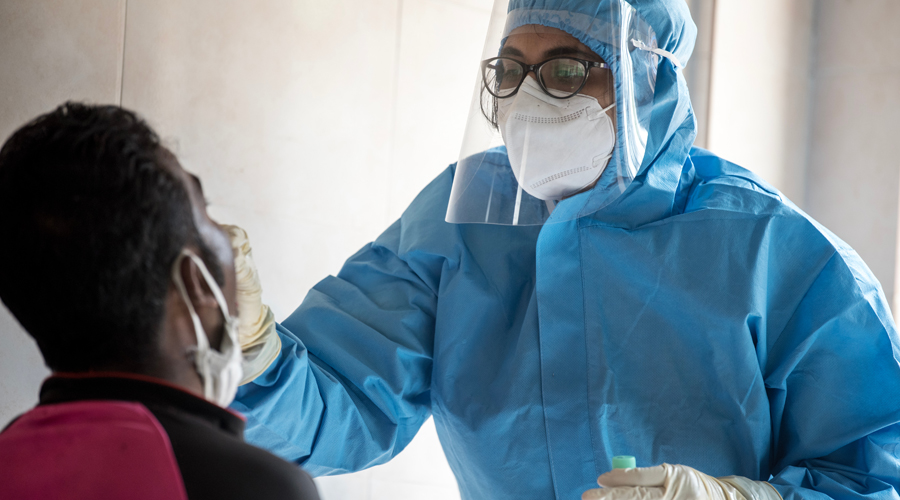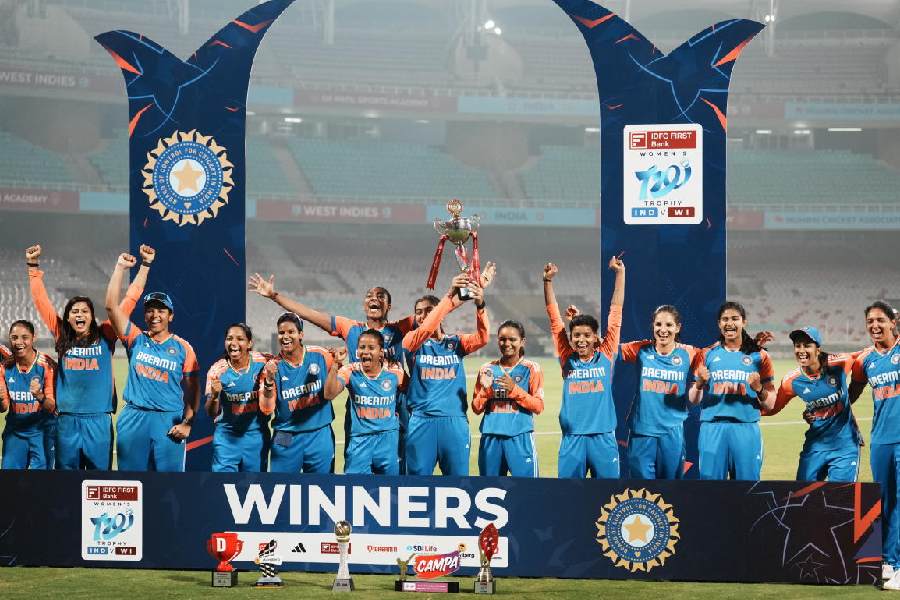Kerala was the one-time star pupil in the Covid-19 class that’s now become the laggard accounting for more than half the country’s daily new cases. But it’s hoping to move back toward the head of the class thanks to a state-wide vaccination blitzkrieg and case numbers that are finally coming down.
Kerala’s high up on the vaccination scoreboard with more than 90 per cent of the state’s 26.75 million eligible people having received their first jab compared to 65 per cent nationally. Equally impressively, around 35 per cent have now had their second doses too compared to 26 per cent across the country.
The state’s target is to deliver all the first doses in another two weeks and have everyone fully vaccinated around 82 days from now – that’s the time lag required between the two doses.
In terms of the number of cases too, while Kerala accounts for more than 50 per cent of the country’s active Covid-19 cases, the number of patients falling sick with the virus each day has been declining. The R-value, or reproductive number that reflects how swiftly the virus is spreading, has also fallen to below 1 in Kerala. Below one is the ideal number in a pandemic as the number of new infections is below the level needed to sustain the outbreak.
“In Kerala, the worrying phase is over. The numbers should only be going down from here on in,” says Health Economist and WHO consultant Rijo M. John.
From a peak of 32,762 new infections on September 5, numbers were at 15,768 on Tuesday. What’s more, the numbers have been steadying at lower levels in the last few days. The figures had started seriously spiking higher around 10 days after Onam, Kerala’s most important festival, when many people left their homes on shopping excursions and to visit family.
"It’s definitely a more comfortable situation now,” said Arun Nair, a Kerala health economist who works closely with the state government. “With vaccination, we’re not having as many severe cases,” he added.
Looking at the outlook nationally, John is equally reassuring. “The cases are genuinely lower in most of the country. “I don’t expect to see any major surge or anything happening at the national level,” he said. “I’m pretty sure that even by the end of May, when the serosurvey took place, sero-prevalence was close to 70 per cent. Now, (national) sero-prevalence must have easily hit 80-to-85 per cent with the vaccinations and everything,” John said.
The Kerala government’s particularly proud of the fact that the mammoth task of vaccinating everyone over 18 has almost entirely been done by the government with very few people using the private sector.
The state’s been moving in other ways to ensure that the disease is eliminated in every district. It’s been accused of depending too heavily on the less accurate rapid antigen tests. In the last few weeks, it has moved to phase out rapid antigen testing and switch to using only the more reliable RT-PCR tests, except in emergencies such as if an emergency operation has to be performed.
However, there are defenders of the rapid antigen tests both in government and outside. Rapid antigen tests have two huge advantages. Firstly, results are delivered in 20 minutes. By comparison, it take a minimum of a day and more often two, to get RT-PCR results back from the lab. Secondly, rapid antigen tests are priced at about one-fifth the cost of the more expensive RT-PCR tests.
Says John: “If you are testing in a population which is already traced and tracked well, and you have a reasonable expectation that the person is going to be positive, then it’s better to do antigen testing.”
The state government says it’s been a major struggle to get the vaccinations up and case figures down. The greatest difficulties with the vaccination programme were caused by the erratic supplies coming to the state that made planning impossible. “You had 4 lakh vaccinations coming one day and 2 lakh the next. In the beginning, it was impossible to get the workflow algorithms right. How do you plan?” says a senior government official who did not wish to be named.
He adds: “The local self-government people and the Asha workers make sure people turn up for vaccinations. What can you do if you plan and bring people to the centre and you have reduced supply?
The vaccine supply situation began to fall into place after a Central government team visited the state and “in July it was perfectly fine,” he says. Then the government focused on how to get priority individuals vaccinated. These included people over 60, people with health conditions that made them vulnerable, tribals living in remote hamlets and pregnant women.
Once these segments were done then the focus turned to getting the 18-plus sector vaccinated. For this, more centres were opened and even one 24x7 one in Thiruvanthapuram, where people could book and get vaccinated.
Kerala’s strong take-up of the vaccine suggests that “vaccine hesitancy” may not be a major concern for India, unlike for the developed world, John noted.
The government is conducting a serosurvey of the population that will also include children.aged five to 17. Epidemiologists have suggested that the state’s successful track-and-trace containment of the virus during the first wave may have meant that a higher share of its population was without Covid-19 antibodies and vulnerable to the far more virulent Delta variant. In a national seropositivity survey in July, Kerala had the lowest seropositivity rate among the states at 44.4 per cent while Madhya Pradesh had the highest at 79 per cent.
“The serosurvey is being done currently by the health department. The last national survey was 44 per cent but with the vaccination having picked up, the results will be different. They’re also looking what’s happening amongst children,” the government official said.
Experts say they believe the government should have the situation well under control in Kerala in around two months at the latest. With this in mind, the government has said that schools will reopen on November 1. A government committee has also drawn up guidelines to be followed if schools reopen. This includes the number of pupils in a class, how many to a bench and also that no food should be served in schools. Besides that, schools would have to be sanitised daily and have medical equipment for checking temperatures. Consultations will now be held with teachers’ groups on these proposals
All decisions are likely to be reviewed around October 15 when officials will look at the data. Both parents and teachers have voiced alarm about restarting face-to-face classes too early. (Figures released Tuesday showed that in England where schools have reopened, over half of confirmed cases were in the mainly unvaccinated under-20 age group with close to 40 per cent clustered in the 10-to-19-year age bracket).











